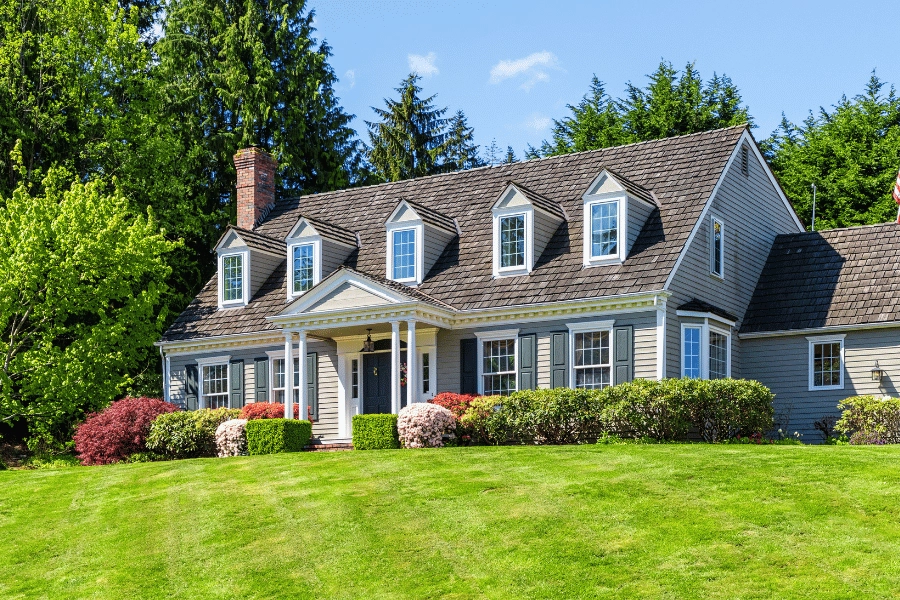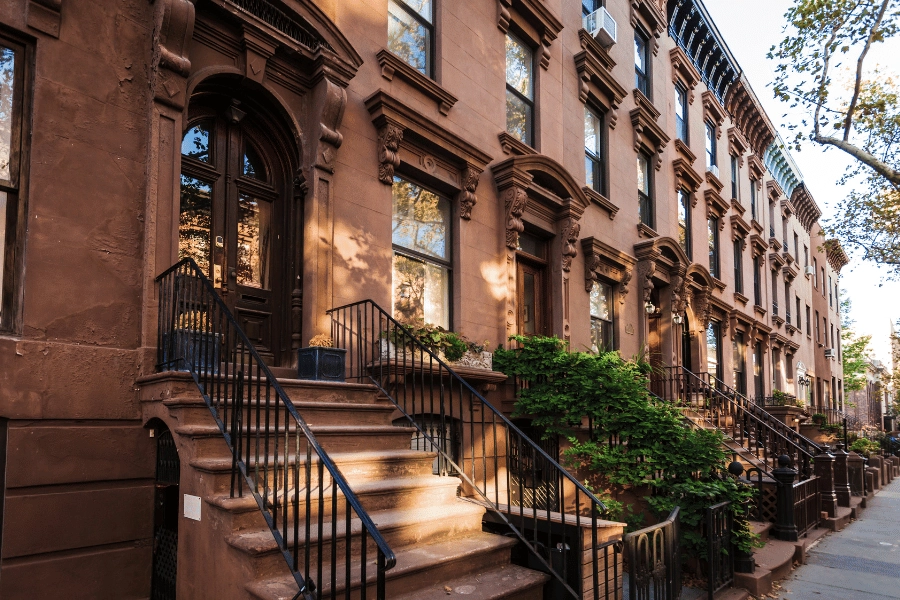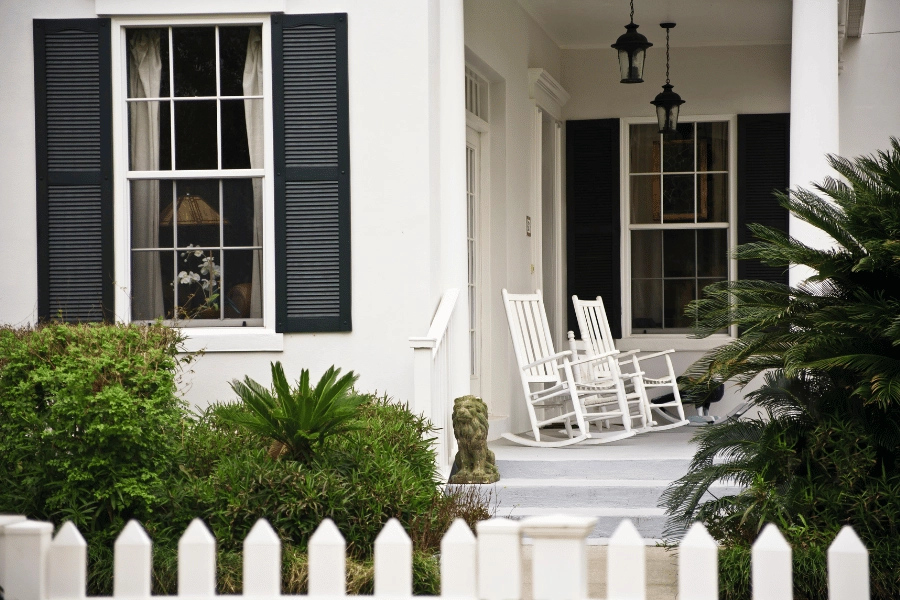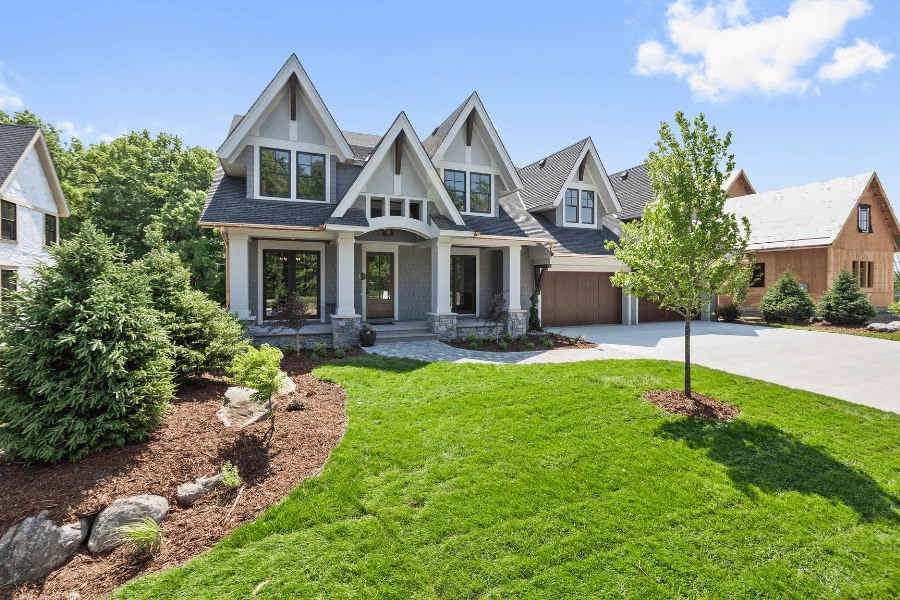Cottage Style Homes
What is a cottage-style home? Let's explore the characteristics of a cottage-style home, its pros and cons, and what makes it such a popular home style.
Potential buyers look for various popular home types in their search. It's essential to explore every option before making one of the most significant purchases of your life. One house type potential buyers look for is a cottage-style home.
When you picture the perfect cozy retreat, chances are you're envisioning a cottage-style home. These enchanting dwellings have captured hearts for centuries with their storybook charm and intimate appeal.
These homes tend to be smaller, perfect for first-time homebuyers who aren't looking for abundant space. Cottages commonly have a rustic and farmhouse feel, so they're also ideal for those who enjoy coziness and comfort over luxury.
If you're considering making Raleigh your home, understanding cottage-style architecture could open the door to finding the home of your dreams.
1. What Classifies a Cottage Style Home?
A cottage-style home is fundamentally defined by its modest size, cozy proportions, and emphasis on comfort over grandeur. Unlike sprawling mansions or imposing estates, cottages were initially designed as practical, comfortable dwellings for working-class families. Today, they represent a design prioritizing charm, functionality, and connection to the surrounding landscape.
The classification of a cottage-style home typically includes homes ranging from 1,000 to 2,000 square feet. What truly defines a cottage isn't just size but the intentional design choices that create an atmosphere of warmth and intimacy. These homes often feature asymmetrical facades, mixed materials, and evolved details.
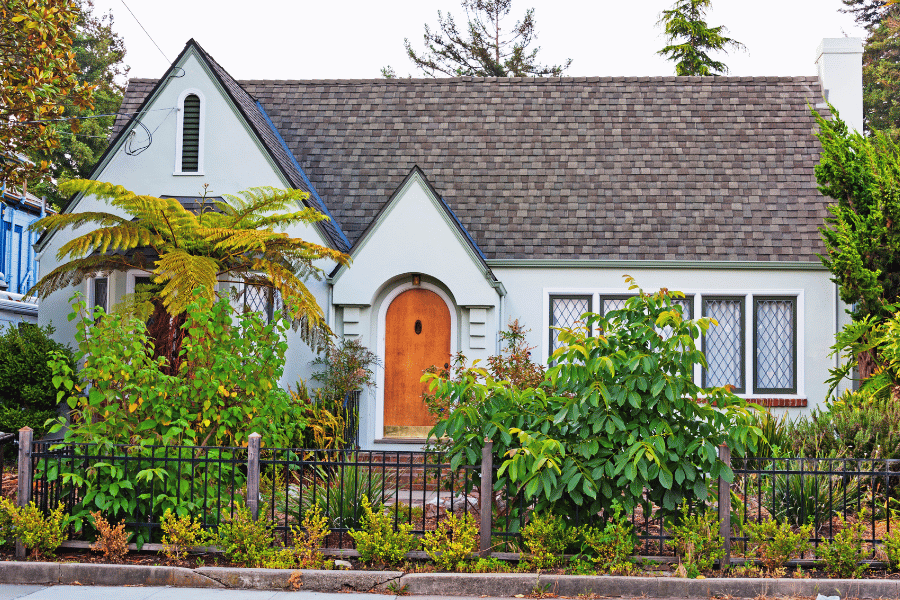
2. The Rich History of Cottage Architecture
The cottage style has deep roots in English and European architecture, dating back to medieval times. Originally, "cottage" was a small dwelling for agricultural workers, typically featuring locally sourced materials like stone, timber, and thatch. These homes were built to withstand harsh weather while providing practical living spaces for families.
During the late 19th and early 20th century Arts and Crafts movement, cottage-style architecture experienced a renaissance. Architects like Edwin Lutyens in England and the Greene brothers in America elevated the humble cottage into an art form, emphasizing handcrafted details and harmony with nature. This movement brought cottage style to American shores, where it adapted to local climates and materials.
The style gained popularity in the 1920s and 1930s, coinciding with the rise of suburban development. Hollywood's influence during this era, with stars building charming cottage retreats, further romanticized the style. Today, cottage architecture continues to evolve, with modern interpretations maintaining the essential spirit while incorporating contemporary amenities.
3. Types of Cottage Style Homes
English Cottage
The quintessential cottage style, English cottages feature steeply pitched roofs, casement windows, and often incorporate stone or brick construction. These homes typically showcase climbing vines, arched doorways, and flower boxes that create a fairy-tale appearance.
French Country Cottage
French-style cottages have a country charm, with open spaces that create a beautiful and inviting home. They typically have stone facades, brickwork, and clay tile roofs. Like the English style, they usually have gardens or vines that grow up the side of the home.
Drawing inspiration from rural French architecture, these cottages often feature limestone or stucco exteriors, curved doorways, and copper accents. French country cottages emphasize rustic elegance with sophisticated color palettes and refined details.
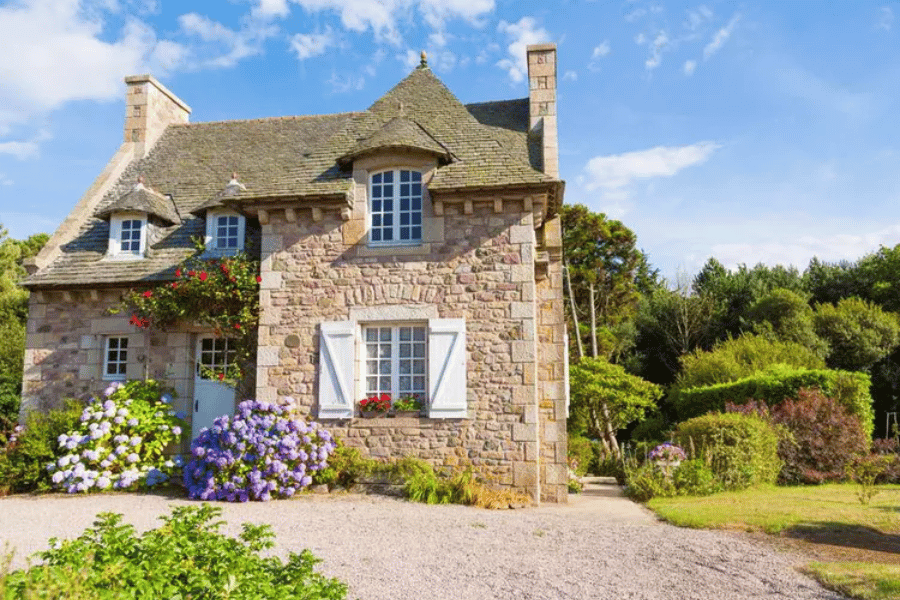
Coastal Cottage
Most American cottages fall into the coastal category, having broad front porches, wooden shingles, white trim, and big bay windows. This style is mainly found in Cape Cod, Massachusetts, and Monterey, California.
Designed for coastal living, coastal cottages emphasize casual comfort with weathered materials, large windows, and relaxed floor plans. These homes often feature wraparound porches and are elevated to protect against flooding.
Craftsman Cottage
Craftsman cottages are a product of the American Arts and Crafts movement. They showcase exposed rafters, built-in furniture, and extensive use of natural materials. These homes often feature covered front porches with tapered columns and decorative brackets.
Tudor Cottage
Tudor cottages incorporate medieval English elements like half-timbering, steep gables, and tall, narrow windows. These homes often feature decorative brickwork and asymmetrical facades that create visual interest.
4. Characteristics of Cottage-Style Homes
Nearly all cottages feature traditional home living space, including a primary bedroom, a living room, a dining room, and bathrooms. They can have many different looks, but also have recognizable characteristics.
Exterior Features
Cottage-style homes are immediately recognizable by their distinctive exterior elements. Steep-pitched roofs, often with multiple gables, create dramatic rooflines that add visual interest and practical benefits like improved drainage and attic space. Mixed materials such as stone, brick, wood siding, and stucco are commonly combined to create texture and depth.
Windows play a crucial role in cottage design, with casement windows being particularly popular. These often feature small panes or decorative muntins that enhance the home's character. Bay windows and dormer windows are frequent additions that provide both charm and additional interior space.
Front porches or covered entryways are nearly universal in cottage design, creating welcoming transitions between indoor and outdoor spaces. These areas often feature decorative columns, brackets, or pergolas, adding architectural interest.
Interior Features
Inside, cottage-style homes emphasize comfort and functionality. Low ceilings with exposed beams create intimate spaces, while built-in storage solutions maximize space efficiency. Fireplaces often serve as focal points, with decorative mantels and surrounding stonework or tile.
Hardwood floors are typical throughout, often in wider planks that enhance the rustic appeal. Window seats, breakfast nooks, and cozy reading alcoves make the most of available space while adding charm.
Kitchens in cottage-style homes typically feature farmhouse sinks, open shelving, and vintage-inspired appliances. Butler's pantries and breakfast nooks are popular additions that enhance functionality and character.
Other distinct characteristics that cottage-style homes offer include:
Smaller Size
Cottage homes value coziness and comfort over large floor plans, so they tend to be smaller. They have less overall square footage than your average single-family home and care more about outdoor spaces and curb appeal.
Many modern cottages can be large but still encompass the same feel. While classic cottages are smaller, any size should feel snug and quaint compared to large Victorian-style homes.
Open Floor Plan
Most cottages feature an open floor plan that makes the smaller square footage seem bigger than it is. Since there is not much space, you want to take advantage of what's available and make it functional, so it's essential for each room to feel usable.
Irregular Designs
Cottages do not have a set architectural style but combine various features to create distinct and unique properties. A lot of detail is given to the window shapes, arches in the doorways, and trim throughout the home.
Most cottages have an asymmetrical design with a prominent interior and exterior chimney. They also tend to have small covered porches that add to the coziness and quaint feel of the house.
Coziness
Coziness is a primary characteristic and defining point of a cottage-style home. You can make smaller rooms cozy by adding bookshelves, layering textiles, curtains, rugs, and dim lighting. You want to focus on making your areas feel warm and inviting instead of modern and industrial.
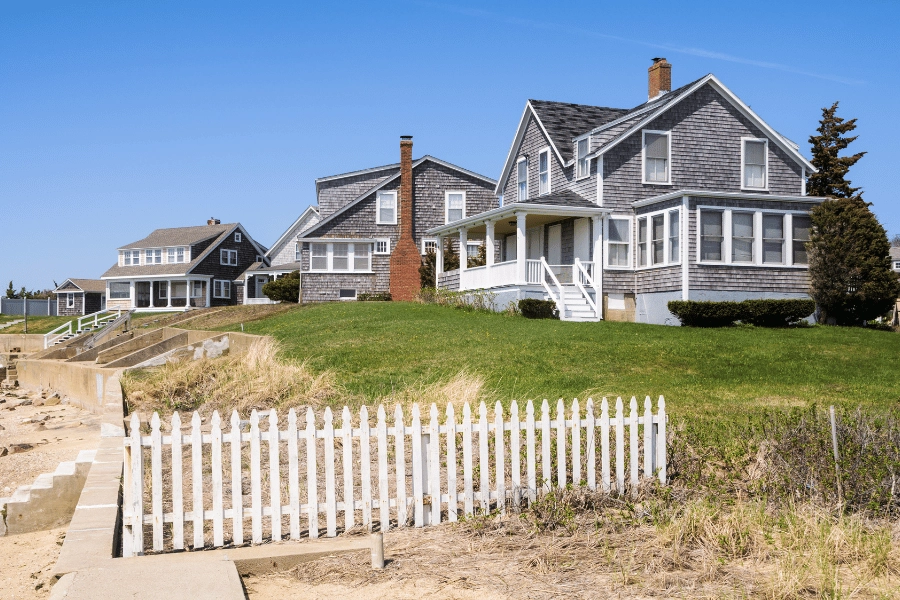
5. Pros of Living in a Cottage-Style Home
Cozy and Intimate Atmosphere
Cottage homes create an inherently warm and welcoming environment. The smaller scale and thoughtful proportions foster a sense of security and comfort that many homeowners love.
Lower Maintenance Costs
Generally smaller than traditional homes, cottages require less energy to heat and cool, resulting in lower utility bills. The compact size also means less space to clean and maintain.
Unique Character and Charm
Each cottage-style home has distinctive personality features that mass-produced homes often lack. Handcrafted details, irregular layouts, and vintage elements create homes with genuine character.
Strong Resale Value
Well-maintained cottage-style homes often retain their value well, as their timeless appeal attracts buyers seeking alternatives to cookie-cutter housing.
Connection to Nature
Many cottage designs emphasize outdoor living spaces and large windows that blur the boundaries between indoor and outdoor environments.
6. Cons of Living in a Cottage-Style Home
Limited Space
The cozy nature of cottages can become cramped for larger families or those who prefer spacious living areas. Storage can be challenging, requiring creative solutions.
Lower Ceilings
While atmospheric, low ceilings can feel confining to some residents, particularly those who are tall or prefer open, airy spaces.
Maintenance Requirements
Older cottage-style homes may require more frequent maintenance, particularly if they feature original materials or vintage systems.
Layout Limitations
The charming, irregular layouts that give cottages their character can sometimes create functional challenges for modern living needs.
Cost of Authenticity
Maintaining authentic cottage-style features can be expensive, particularly when dealing with specialty materials or skilled craftspeople.
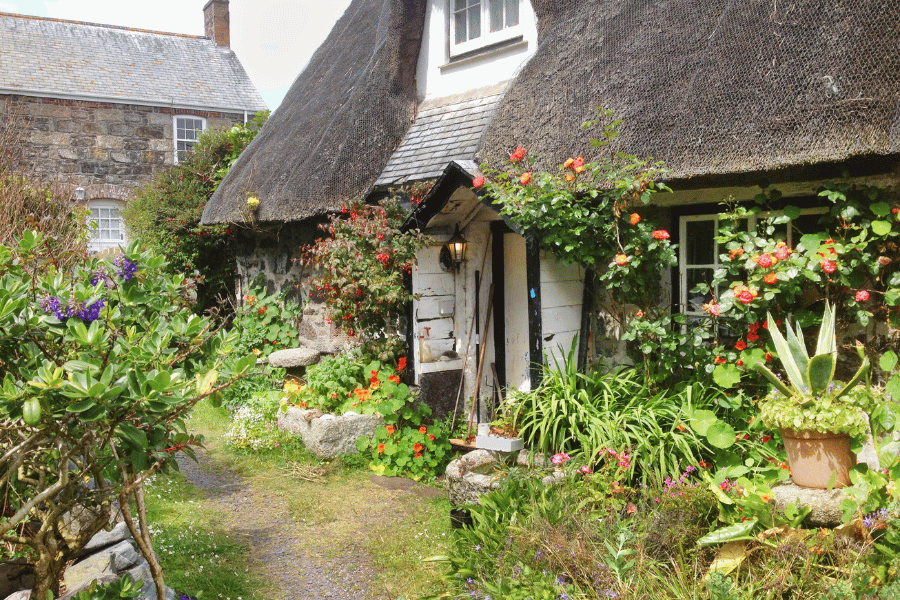
7. Cottage Style Homes in Raleigh
Raleigh's temperate climate and diverse architecture make it an ideal location for cottage-style homes. The city's mature neighborhoods feature numerous examples of cottage architecture, from 1920s English cottages in historic districts to modern cottages in newer developments.
Cottage-style homes in Raleigh represent an excellent investment opportunity. The city's growing population and strong economy create steady demand for unique housing options. Due to their distinctive character and limited supply, cottage-style homes often appreciate well.
When searching for a cottage-style home in Raleigh, consider its architectural integrity and potential for modern living. Look for homes with original details that have been well-maintained, as these features are difficult and expensive to replicate.
Consider the lot size and landscaping potential, as outdoor spaces are essential to the cottage-style experience. A home with mature trees and established gardens can provide immediate curb appeal and long-term value.
Popular neighborhoods in Raleigh for cottage-style homes include:
Oakwood Historic District
Historic Oakwood is one of the most walkable neighborhoods in the city. This charming area features numerous cottage-style homes dating from the early 20th century, many of which have been lovingly restored and maintained.
Five Points
Five Points is an eclectic neighborhood in Raleigh that is perfect for families. It features a mix of architectural styles, including charming cottage homes.
Mordecai
As one of Raleigh's oldest neighborhoods, Mordecai is rich in history. Its cottage-style homes showcase the evolution of Raleigh's residential architecture.
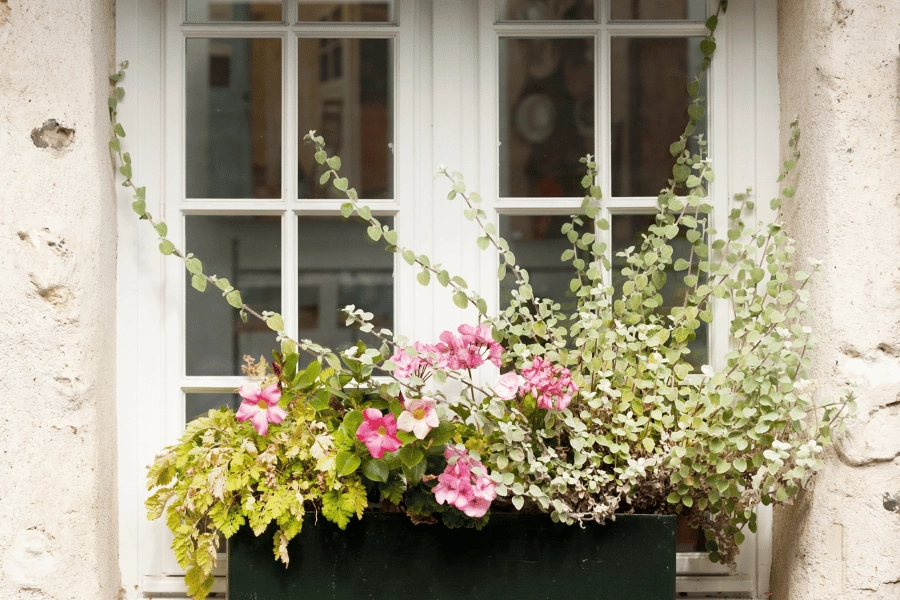
FAQs
What makes a house a cottage?
Cottages are characterized by their unique architectural style, smaller square footage, asymmetrical designs, low-pitched gable roofs, and covered porches.
What are the different types of cottages?
The most common cottage-style homes are English, Nordic, Coastal, French, American, and Tudor.
What is the difference between a bungalow and a cottage?
Bungalows often have a second story and have unique architecture and design elements. At the same time, cottages are typically smaller and combine various design elements to create a unique and distinct home.
Final Thoughts on Cottage-Style Homes
Cottage-style homes offer a unique blend of charm, comfort, and character that appeals to different types of homebuyers. Whether you're drawn to an English cottage's romantic appeal or the Craftsman cottage's rustic sophistication, Raleigh's diverse housing market offers options to suit every taste and budget.
Cottages can be the perfect home for small families and people looking to downsize. They may not be the largest home type, but they boast beautiful interiors and inviting spaces that make you and any guests feel welcome.
More recently built cottages will feature more modern appliances and features, but will still have the same cozy and quaint feel that makes them unique. They can also be the perfect vacation home for your next getaway.
The timeless appeal of cottage-style architecture, combined with Raleigh's thriving economy and pleasant climate, makes these homes an excellent choice for anyone seeking a distinctive place to call home.
If you are moving to Raleigh and are looking for an agent to find your dream cottage, we are happy to help. Please contact the experts at Raleigh Realty today to begin your journey toward finding the best cottage of your dreams in North Carolina's capital city.
